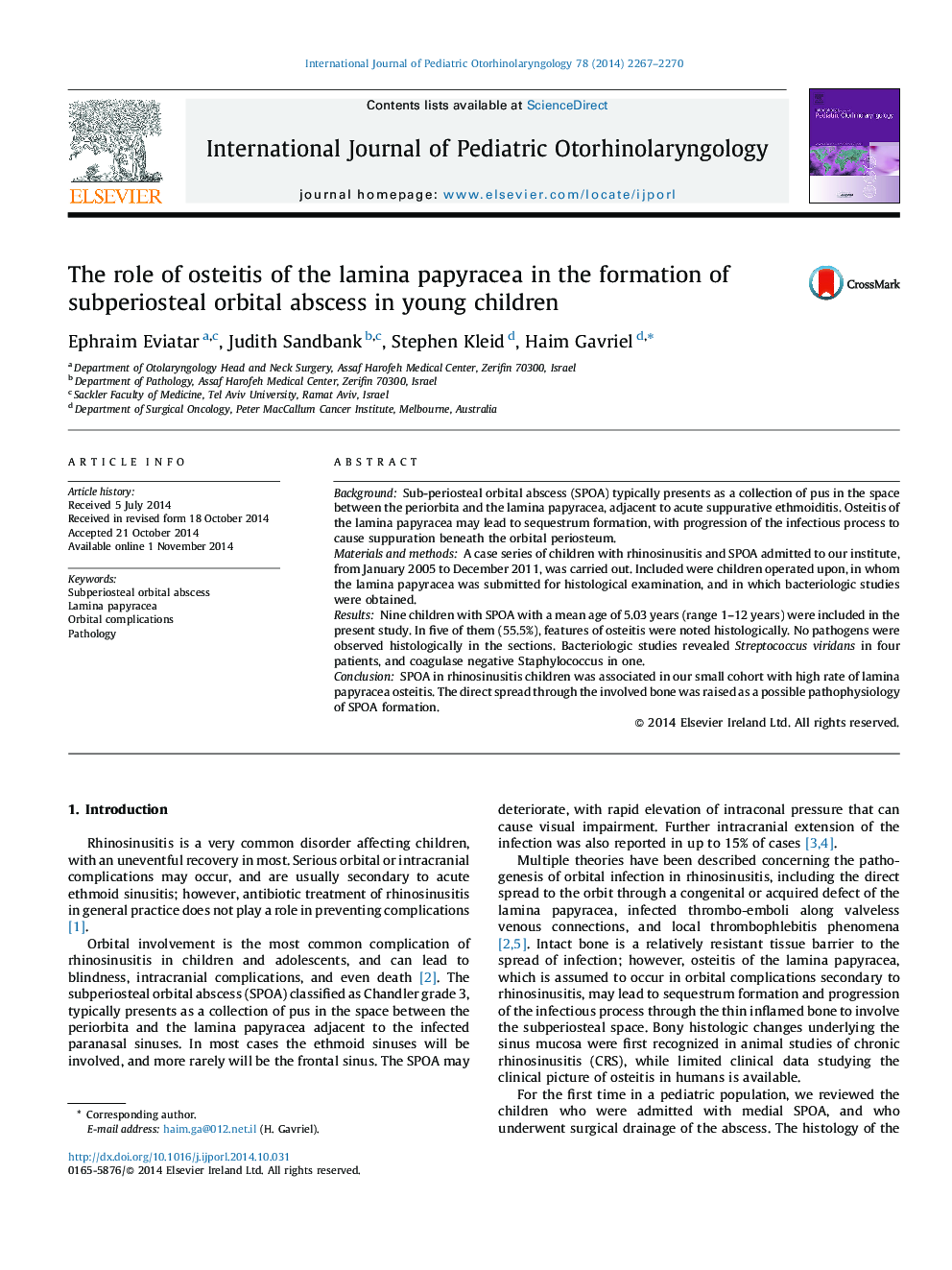| Article ID | Journal | Published Year | Pages | File Type |
|---|---|---|---|---|
| 4111821 | International Journal of Pediatric Otorhinolaryngology | 2014 | 4 Pages |
BackgroundSub-periosteal orbital abscess (SPOA) typically presents as a collection of pus in the space between the periorbita and the lamina papyracea, adjacent to acute suppurative ethmoiditis. Osteitis of the lamina papyracea may lead to sequestrum formation, with progression of the infectious process to cause suppuration beneath the orbital periosteum.Materials and methodsA case series of children with rhinosinusitis and SPOA admitted to our institute, from January 2005 to December 2011, was carried out. Included were children operated upon, in whom the lamina papyracea was submitted for histological examination, and in which bacteriologic studies were obtained.ResultsNine children with SPOA with a mean age of 5.03 years (range 1–12 years) were included in the present study. In five of them (55.5%), features of osteitis were noted histologically. No pathogens were observed histologically in the sections. Bacteriologic studies revealed Streptococcus viridans in four patients, and coagulase negative Staphylococcus in one.ConclusionSPOA in rhinosinusitis children was associated in our small cohort with high rate of lamina papyracea osteitis. The direct spread through the involved bone was raised as a possible pathophysiology of SPOA formation.
